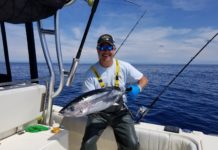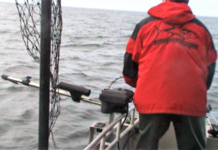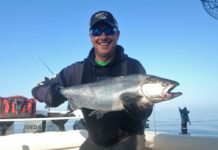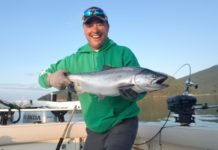
Marine bacteria growing on an agar plate. Image courtesy of Lophelia II 2012 Expedition, NOAA-OER/BOEM.
Did You Know?
Initiated on the summer solstice in 2012, Ocean Sampling Day (OSD) organizes scientists from all over the world to collect the largest dataset on marine microbial diversity and function ever taken on a single day. OSD is now repeated on summer and winter solstice days with defined scientific procedures for how the samples are collected and what data is recorded at the time of collection, including date, time, location, air and water temperature, salinity, pH, and turbidity.
Collected information will provide insights into microbial diversity and function and may contribute to the identification of novel, ocean-derived biotechnologies.
The term “marine microbe” covers a diversity of microorganisms, including microalgae, bacteria and archaea, protozoa fungi, and viruses. These organisms are exceedingly small—only 1/8000th the volume of a human cell and spanning about 1/100th the diameter of a human hair. Up to a million of them live in just one milliliter of seawater.
Despite being found everywhere on Earth—in your belly, dirt, the oceans—the diversity and distribution of microorganisms remain under-sampled and uncharted, especially in the deep sea.
We know that microbes are the Earth’s processing factories of biological, geological, and chemical (biogeochemical) interactions. Most marine microbes exist in highly organized and interactive communities that are versatile, complex, and difficult to analyze. They account for more than 98 percent of ocean biomass and possess as much variability as the environments they inhabit.
These organisms are capable of existing in practically any environment and garnering energy from a variety of sources, ranging from solar radiation to chemosynthesis. They play many different roles in the marine environment, from being the base of the food chain to controlling much of the flow of marine energy and nutrients and being essential to the ocean’s health.
Marine microbe communities can evolve rapidly in response to environmental shifts and could be used as indicators of ocean change. In fact, marine microbes are “the canary in the coal mine” for the marine environment. In addition, they are also drivers of change in the ocean. Consequently, it is very important to acquire baseline information about these microorganisms against which future changes could be identified.
For More Information:
Marine Microbes: Did You Know? (pdf, 289)
Grow in Culture, Maybe? ~ Lophelia II 2012: Deepwater Platform Corals
Microbes Everywhere! ~ Mid-Cayman Rise Expedition 2011
Microbes in Oceanic Basalt ~ Exploring Alaska’s Seamounts 2002
NOAA Participates in Ocean Sampling Day
Sign up for the Ocean Explorer Email Update List.














